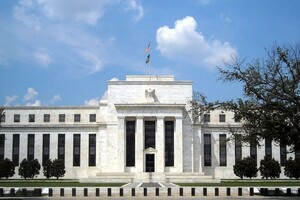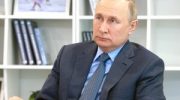Such a measure to combat the record rise in prices due to the war waged by Russia against Ukraine will inevitably slow down economic growth, but not before the recession, the issuer hopes.

In his statement on Wednesday, the leadership of the US Federal Reserve – Federal Reserve – noted that Russia's invasion of Ukraine increases inflationary pressures by raising oil and food prices .
The Federal Reserve has stepped up the fight against high inflation in 40 years , raising the base interest rate by half a percent on Wednesday. This is the most radical step since 2000.
Raising the Fed's key short-term rate has raised it from 0.75% to 1%, the highest since the pandemic erupted two years ago.
>
The Fed has also announced that it will start cutting its huge balance sheet, consisting mainly of treasury and mortgage bonds, at $ 9 trillion. The reduction of these reserves will lead to a further increase in the cost of credit throughout the economy.
With rising prices for food, energy and consumer goods, the Fed's goal is to cut costs and slow economic growth by making loans more expensive for individuals and businesses. The central bank hopes that the higher cost of mortgages, credit cards and car loans will slow costs so much to curb inflation, but not so much as to cause a recession.
Such a balancing policy is a very delicate one. The Fed has been severely criticized for being too sluggish in tightening credit policies, and many economists are skeptical that it will help avoid a recession.
Speaking at a news conference on Wednesday, Fed Chairman Jerome Powell made it clear that there will be further large rate increases. He said the further increase in the Fed's key half-point rate “should be considered at the next few meetings” in June and July. stability “, ie containment of high inflation, necessary to maintain the health of the economy.
In a statement on Wednesday, the Central Bank said that Russia's invasion of Ukraine was increasing inflationary pressures by raising oil and food prices. It was also noted that “COVID-related isolation in China is likely to exacerbate supply chain disruptions”, which could further increase inflation.
Read also: COVID-19 and the war in Ukraine have provoked the highest inflation in 40 years
Inflation in the United States, according to the Fed, reached 6.6% in April. This is the highest figure in four decades. Inflation has accelerated due to a combination of high consumer spending, chronic supply disruptions and a sharp rise in gas and food prices intensified by Russia's war against Ukraine.
Some economists warn that the Fed is unable to solve a number of problems inflation, in particular such as shortages of goods and labor.
“The Fed can't solve supply-side problems with higher interest rates,” said Jim Byrd, chief investment officer of Plante Moran Financial Advisors. “The rigidity (policy) of the Fed does not lead to the opening of Chinese plants, increased grain supplies from Ukraine, the movement of container vessels to where they are needed, or the hiring of truckers to transport goods.”
on the economy. Home sales fell 2.7% from February to March, reflecting rising mortgage rates, in part due to the Fed's planned rate hike. The average rate on a 30-year mortgage has jumped 2 percentage points since the beginning of the year, reaching 5.1%.
However, the economy as a whole remains healthy in most respects. This is especially true for the US labor market: many jobs, few layoffs, unemployment is close to the 50-year low, and the number of vacancies has reached a record high.
At least 400,000 jobs have been created in 11 months in a row, and employers are struggling with labor shortages. Wages are growing by about 5% per year. This stabilizes consumer demand despite price jumps.




